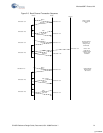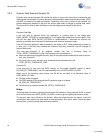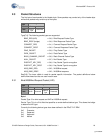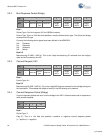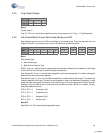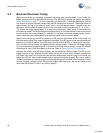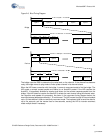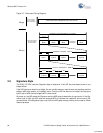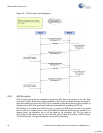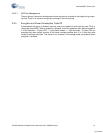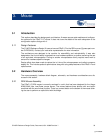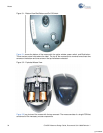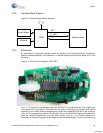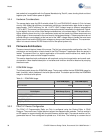
CY4672 Reference Design Guide, Document # 001-16968 Revision ** 29
WirelessUSB™ Protocol 2.2
2.6 Encryption
WirelessUSB PRoC LP RDK supports Tiny Encryption Algorithm (TEA) and Advanced Encryption
Standard (AES) 128 to encrypt application data. Data packets may be encrypted for privacy. All
encrypted data packets must have a payload of 8 or 16 bytes depending on the method chosen; this
is the minimum block size for the encryption algorithm.
2.6.1 TEA Encryption
Some of the features of TEA are:
■ 128-bit encryption key
■ 8-byte block size
■ Minimal RAM requirements
■ Small code size
■ Highly resistant to differential crypt analysis
In order to use the TEA algorithm both the bridge and HIDs must possess the data encryption key.
The bridge is responsible for creating the key, which is then shared with the HIDs. There are a vari-
ety of possible methods to share the key between the two devices. The key may be exchanged over
the WirelessUSB link using the encryption key request and encryption key response packets.
2.6.1.1 TEA Key Management over WirelessUSB
After binding and connecting to the bridge, the HID transmits an encryption key request packet and
listens for an AutoACK followed by an encryption key response packet that contains the first half of
the data encryption key. The HID then uses the key encryption key (calculated from the bridge and
the HID MIDs) to decrypt the data encryption key. The HID repeats this process for the second half
of the data encryption key and stores the key in Flash. After receiving both halves of the data encryp-
tion key the HID may begin transmitting encrypted data to the bridge.
[+] Feedback



